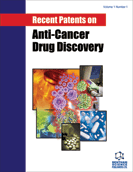
Abstract
Background: Poly (ADP-ribosyl) polymerase 1 (PARP1) is important in maintaining genomic stability, repairing DNA damage, and regulating transcriptional processes. Altered PARP1 activity is associated with a multitude of pathologies especially cancer. The broad application prospects of PARP1 inhibitors attract many well-known pharmaceutical companies, which promotes the development of PARP1 inhibitors.
Objective: Present review aims to introduce PARP1 inhibitors by their structures and try to point out future development direction of PARP1 inhibitors. Method: Details regarding the PARP1and PARP1 inhibitors are obtained from PubMed literatures and patent databases. Conclusion: The action mode of PARP1 inhibitors developed so far is competing with NAD+ for the catalytic site of PARP1. Using such inhibitors affects multiple NAD+-dependent enzymatic pathways, which results in secondary toxic effects. Designing inhibitors targeting other binding sites on the PARP1 protein is a strategy to bypass this pitfall. Analyzing the structure-activity relationships of active PARP1 inhibitors described in the patents, we conclude that for the binding activity, amide group, aromatic ring or heterocyclic ring with rich electronics and heteroatom-substituted in the meta position of amide group are essential. Big substituents introduced in the heterocyclic ring can enhance inhibitory activity and improve solubility or other physicochemical properties. Clinical trials of PARP1 inhibitor were focused on cancer therapies and have achieved remarkable results.Keywords: Cancer, clinical trials, DNA repair, inhibitor, NAD+, PARP1, structure.
 86
86 4
4


























